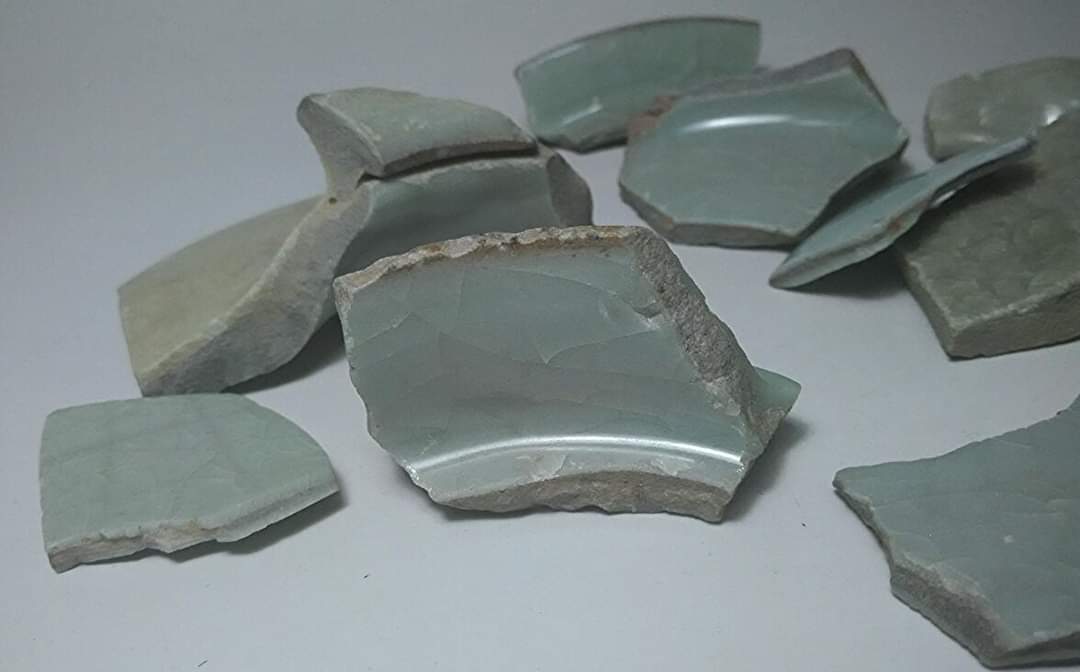
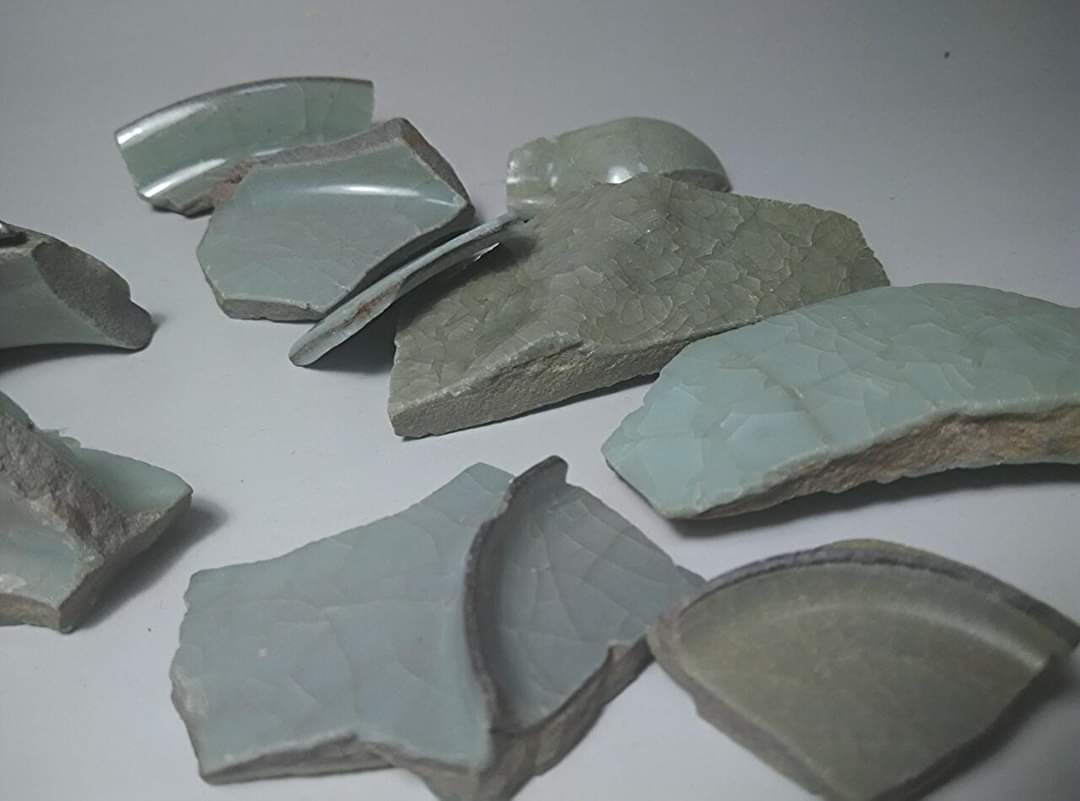
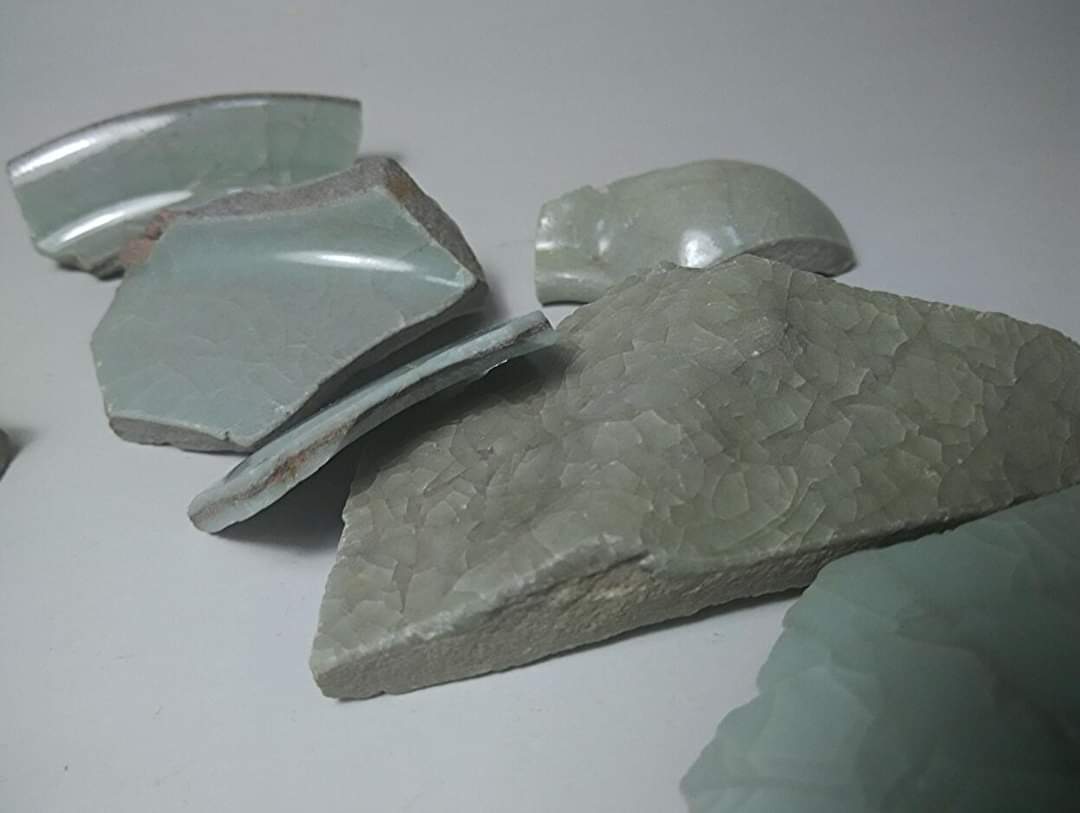
My first encounter with Guan sherds from the Hangzhou Cigarette Factory site (杭州卷烟厂) in Wansong Ling (万松岭) was in 1998, en route to Longquan for the annual conference of the China Antique Ceramic Society (中国古陶瓷学会). I acquired some pieces from an antique shop near the old Zhejiang Museum entrance by West Lake. As a relatively novice collector at the time, I didn't fully grasp their significance.
We also visited Duo Bao Zhai (多宝斋) on Wushan Lu (吴山路), owned by Zhang Duo Duo (张多多), whose name (meaning "plentiful") and shop name (meaning "many treasures") were easy to remember. He had a large selection of impressive, more complete pieces. In 2011, while attending another ceramics conference in Longquan, I visited Wushan Tongbao Cheng (吴山通宝城), a large antique mall where Zhang Duo Duo had relocated and expanded his shop. When I inquired about the Guan fragments, I learned that he had sold them all. By then, Guan sherds from the cigarette factory site were scarce in the market. However, I did see some fragments from the Laohu Dong (Tiger Cave) kiln.
 |
 |
 |
| Guan sherds from the Hangzhou Cigarette Factory – My Collection |
Years later, I stumbled upon an online article detailing the 1997 discovery at the cigarette factory site. During construction, a massive quantity of Guan sherds was unearthed. The author recounted how truckloads of fragments were transported and dumped near the Qiantang River, estimating the total at several hundred thousand pieces—a truly remarkable sight! This discovery triggered a frenzy among dealers and collectors, with most of the sherds ending up in Beijing, Hong Kong, and Taiwan.
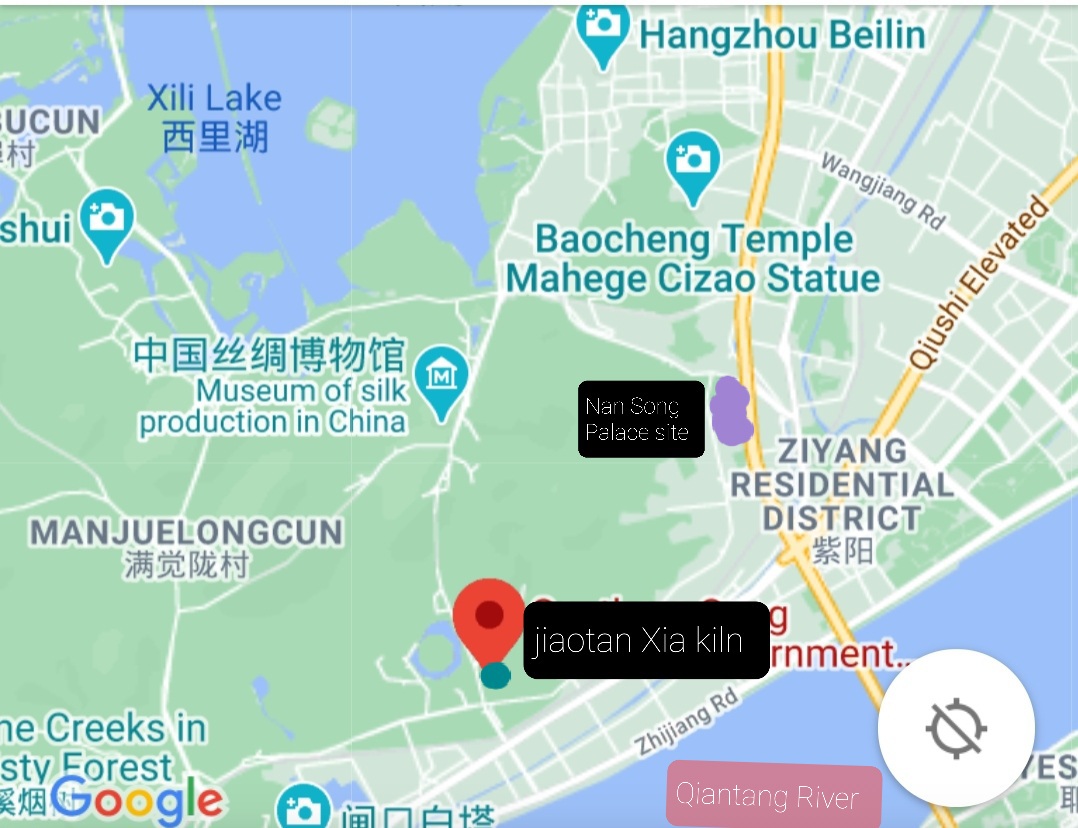 |
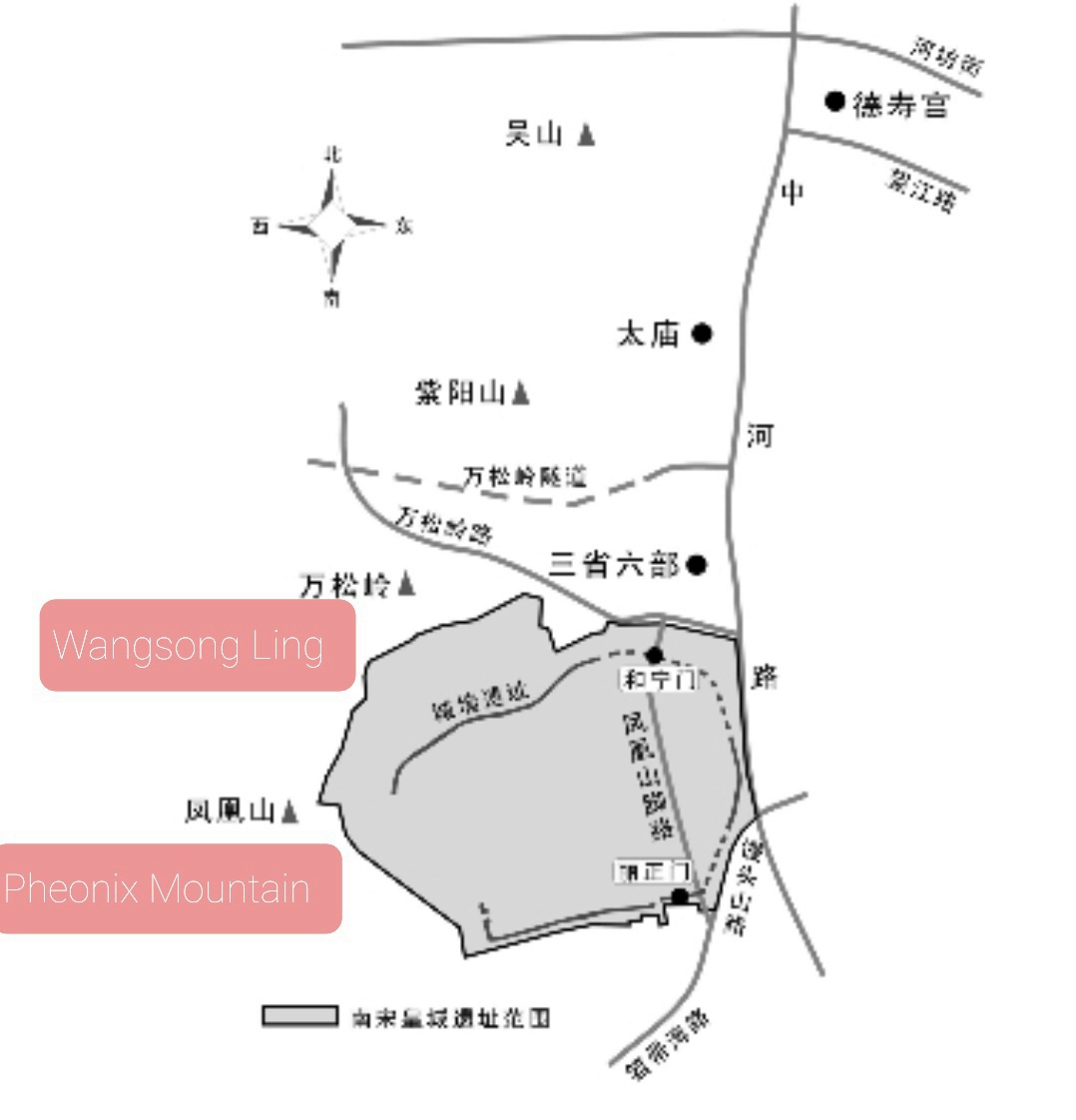 |
| Area shaded gray is the Southern Song palace site and surrounding area. The cigarette factory is at Wansong Ling, and Laohu Dong is at Phoenix Mountain. |
The discovered sherds represent a variety of vessel forms, including censers, boxes, basins, zun, vases, washers, dishes, and bowls. They feature two to four layers of glaze, and the larger, more complete pieces exhibit characteristic Guan features: a purplish rim and a grayish iron foot (紫口铁足). Some even have fine spur marks on the outer base. The glaze colors range from bluish, bluish-green, greenish-blue, and yellowish-green to rice yellow. Most exhibit glaze crackles and whitish specks due to varying degrees of degradation. Numerous fragments show clear manufacturing defects, indicating they were kiln rejects.
 |
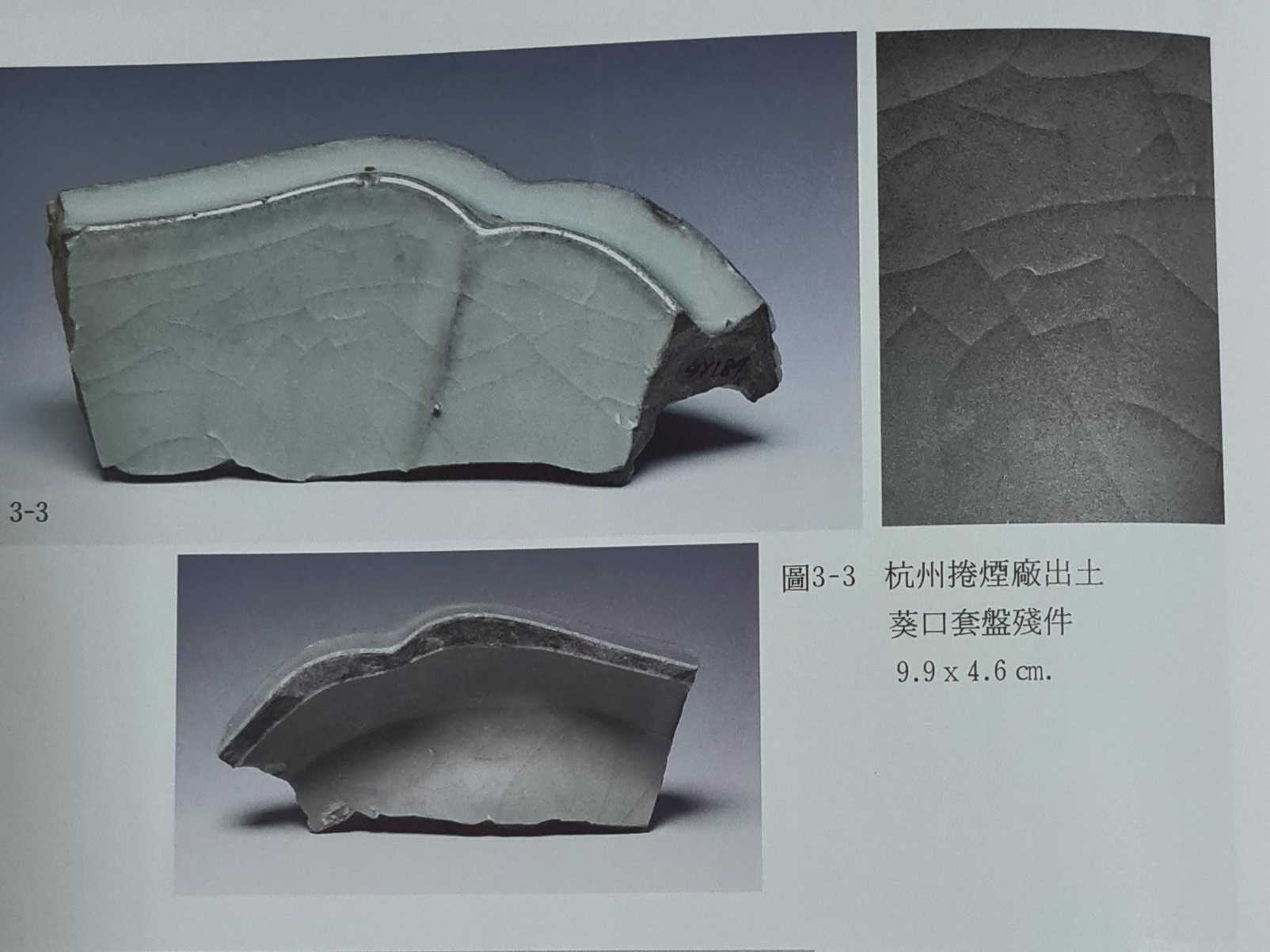 |
| Sherds from the Taiwan Chang Foundation |
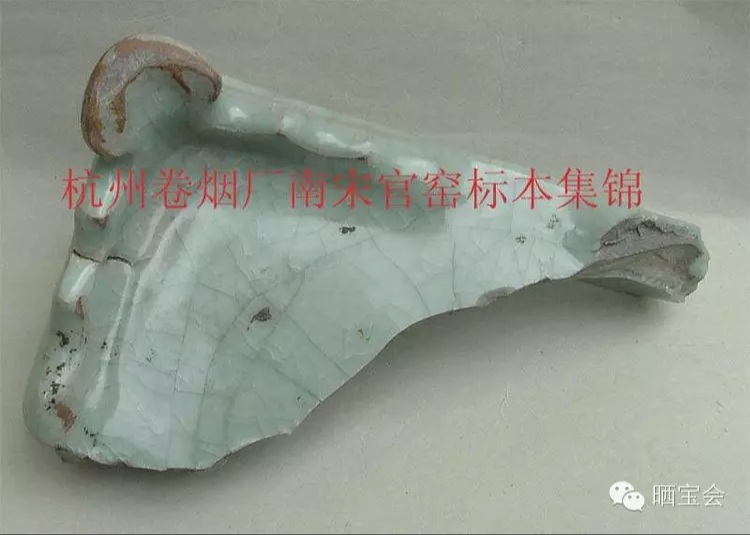 |
 |
 |
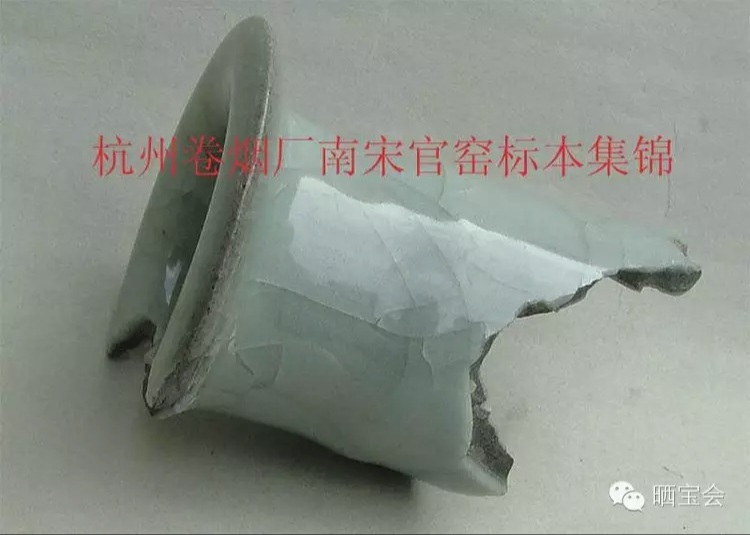 |
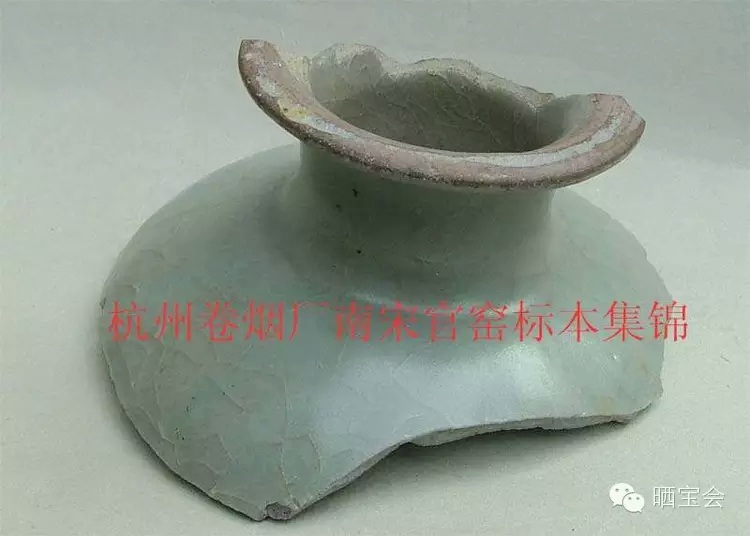 |
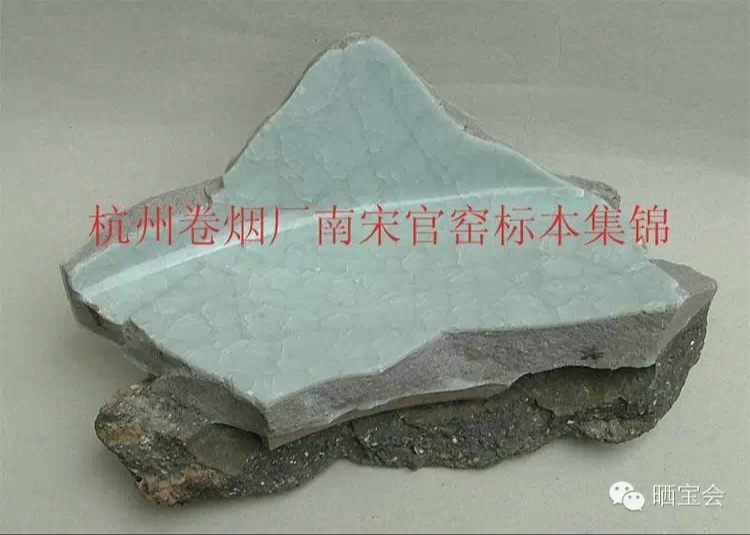 |
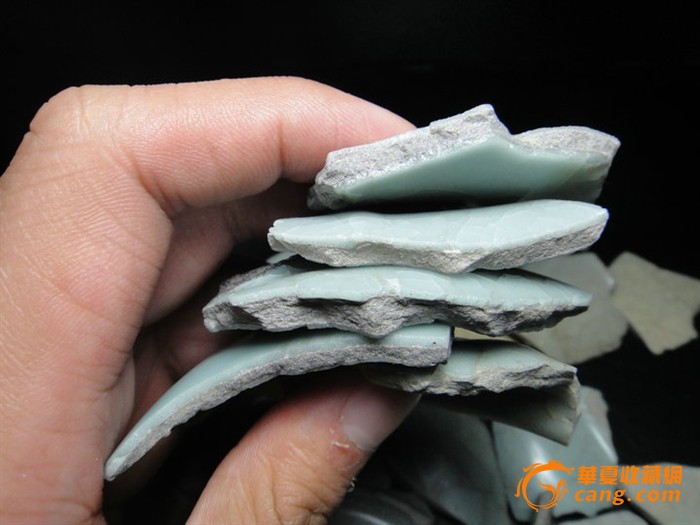 |
Cigarette Factory site Guan sherds in Chinese collections |
From an archaeological perspective, the uncontrolled distribution of these sherds was a significant loss. Systematic study could have provided invaluable insights into Southern Song Guan ware production.
In the 1920s, Japanese ceramic expert Yoneuchiyama Yoshio (米内山庸夫) surveyed an area called Di Zang Dian (地藏殿) in Wansong Ling, finding Guan sherds and kiln furniture scattered on the surface. These sherds are now housed in the Tokyo Nezu Museum (根津美术馆).
 |
| Guan sherds found by Yoneuchiyama Yoshio in the 1920s (Tokyo Nezu Museum) |
Unfortunately, this initial discovery was not followed up. According to the Chinese article, Di Zang Dian, marked on an old Hangzhou map, corresponds to a location within the cigarette factory site. Based on the ancient map of Southern Song Hangzhou (Lin'an), the factory site fell within the area of Xiuneisi, the Southern Song government organization responsible for overseeing the Guan kiln.
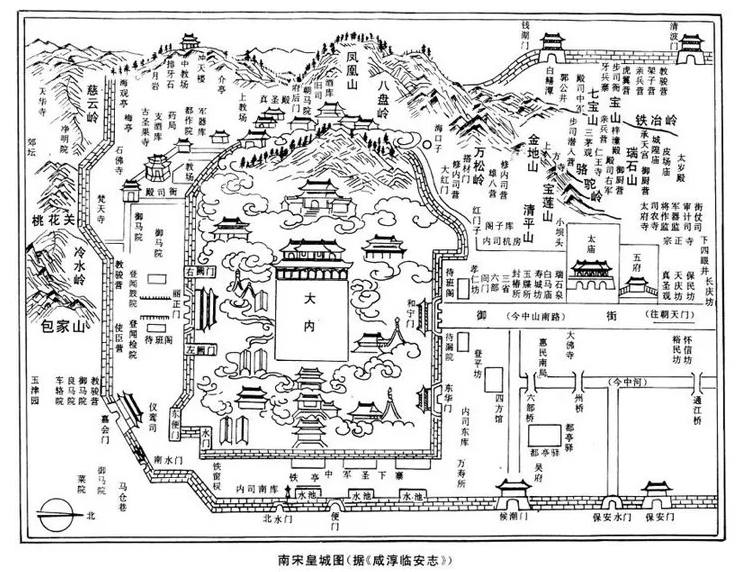 |
|
Map of the Southern Song palace and surrounding area |
Two main theories emerged regarding the cigarette factory finds. The first proposed that the site was a burial ground for broken palace wares. This is questionable, given the presence of manufacturing defects and kiln furniture. The second suggested they were kiln rejects from the Laohu Dong kiln on Phoenix Mountain, transported for burial. However, scientific tests by the Beijing Palace Museum revealed distinct chemical compositions among samples from Laohu Dong, Jiaotan Xia, and the cigarette factory, suggesting the existence of another Guan kiln site.
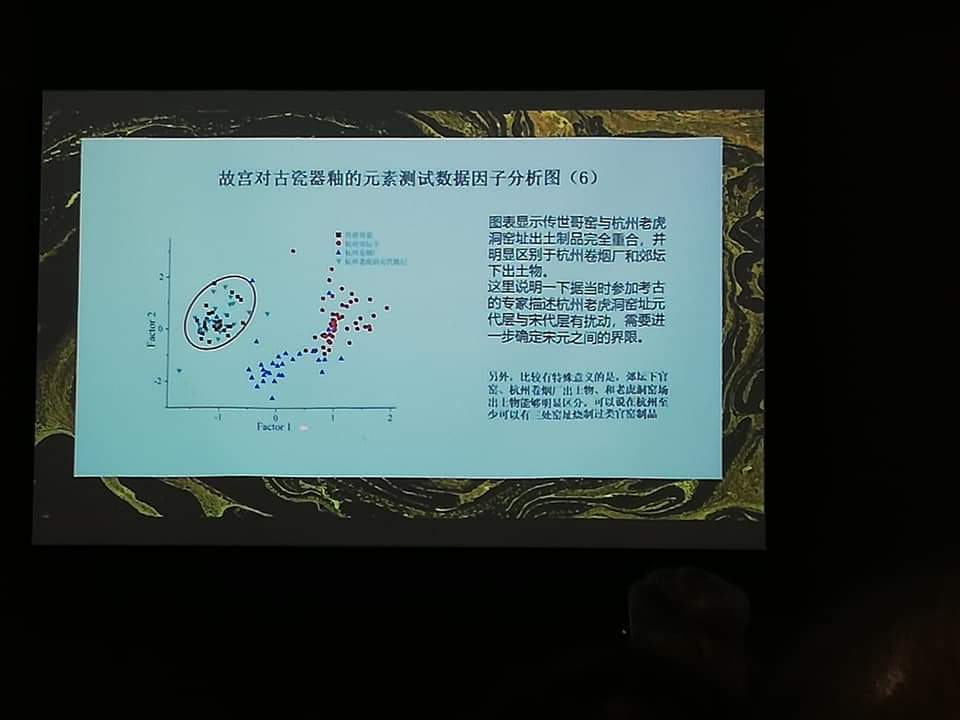 |
|
Chart showing that the glaze chemical composition of shards from Laohu Dong, the cigarette factory site, and Jiaotan Xia are distinctly different and form separate clusters
|
Ancient Chinese texts offer limited and vague information about Guan ware. The most frequently cited source is Ye Zhi's Tan Zhai Bi Heng (叶寘坦斋笔衡), which states that after the court moved south, Shao Chengzhang was appointed to establish kilns following the model of the old capital. These kilns, under the Xiuneisi Bureau (responsible for imperial buildings, furnishings, and kilns), produced porcelain for the court and sacrificial rites. Later, another kiln was built at the foot of Jiaotan (Suburban Altar), suggesting only two Guan ware kilns existed during the Southern Song.
However, the reality was likely more complex. The Southern Song scholar Gu Wenjian (顾文荐), in his Fuxuan Zalu (复暄杂录), noted that wares from Wuni Yao (乌泥窑), Yuyao Yao (余姚窑), and Xu Yao (续窑) were inferior to those from Nei Yao (内窑), generally interpreted as the Xiuneisi kiln. This implies other kilns supplied ceramics to the palace. The locations of Wuni Yao and Xu Yao remain unknown. Could one of them be the kiln at the cigarette factory site?
Professor Li Gang of the Zhejiang Museum has conducted extensive research on this topic, challenging some established views on Southern Song Guan kilns. His arguments, based on re-examining ancient texts and scientific testing, are compelling.
He observes that the quality of the cigarette factory sherds surpasses those from Jiaotan Xia and Laohu Dong, commonly believed to be the Xiuneisi kiln. The former exhibit superior potting, finishing, and a less opaque, more jade-like glaze. Furthermore, TL testing of Guan sherds from the cigarette factory site and the Laohu Dong kiln yielded average calibrated dates of 1145 AD and 1186 AD, respectively.
The Treaty of Shaoxing, ending the Jin-Southern Song conflict, was signed in 1142 AD. With peace, the imperial palace and government complex expanded. Nei Yao, mentioned in ancient texts, was likely established around 1145 AD to produce ceramics for the palace under the supervision of Xiuneisi. The TL dating of the sherds aligns with Nei Yao's operational period.
A potter's wheel component (荡箍) found at the Laohu Dong kiln, inscribed with the characters "Xiuneisi" and the cyclical date "Geng Zi" (庚子), generated excitement among those who believed it was Nei Yao. "Geng Zi" likely corresponds to 1180 or 1240 AD. Professor Li suggests the inscription commemorates the kiln's establishment in 1180 AD, not the ring's manufacture date. Therefore, it couldn't be Nei Yao, which predates it.
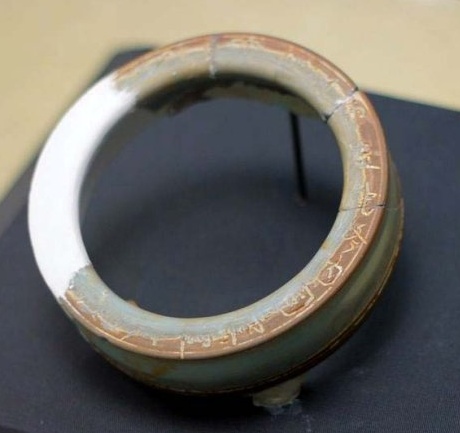 |
| Ring with inscribed characters mentioning Xiuneisi and cyclical dating Geng Zi |
Professor Li proposes that Nei Yao ceased operation and was replaced by the Laohu Dong kiln, which he identifies as Xu Yao (续, meaning "to continue"). He argues that Xiuneisi was not the name of the kiln but the supervisory body that also oversaw the later Jiaotan Xia kiln (established after 1200 AD). His book, Gu Ci Bi Quan (古瓷笔诠), provides further details.